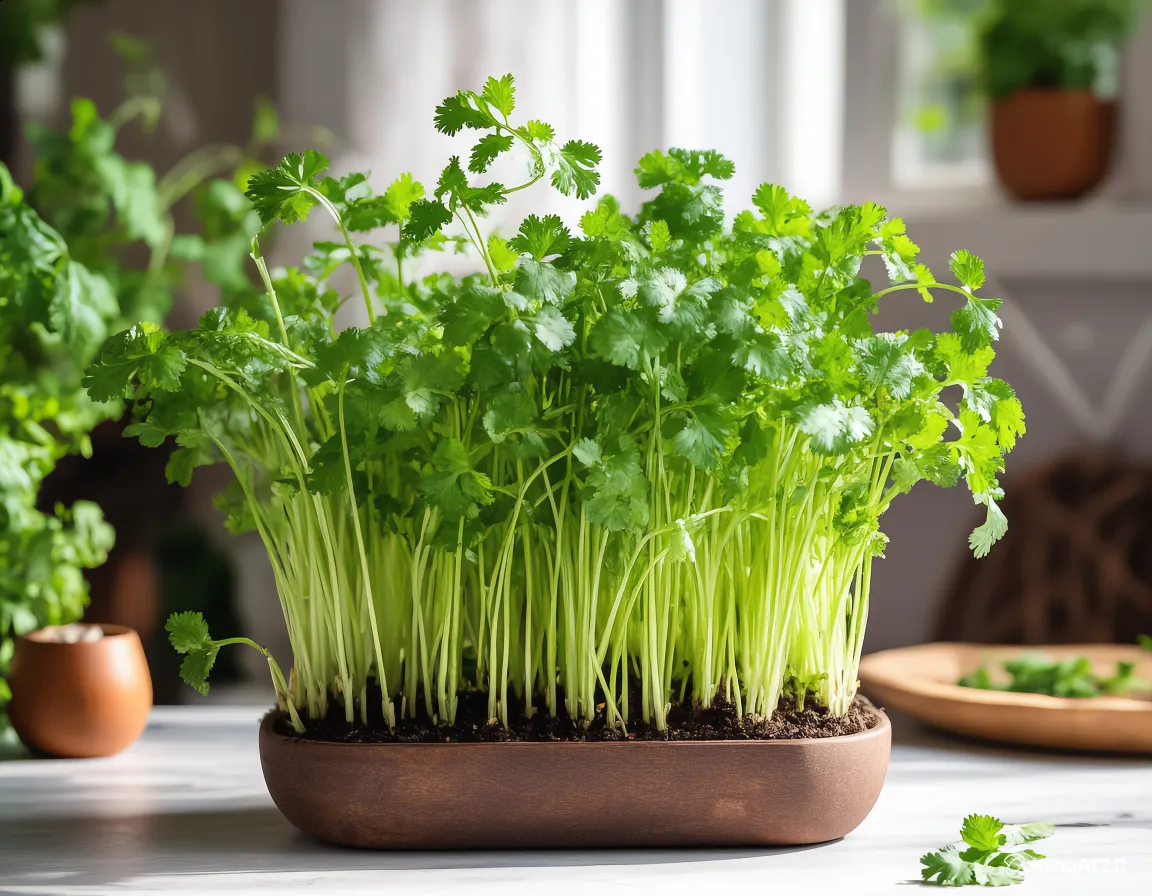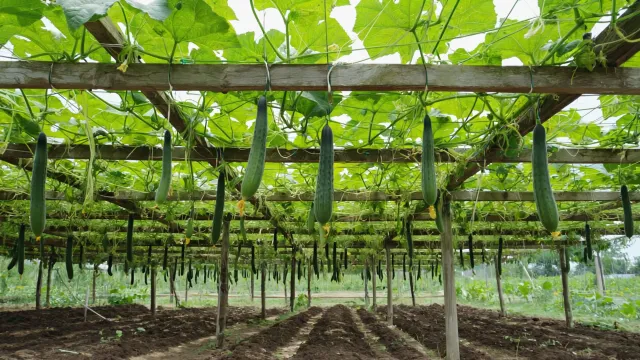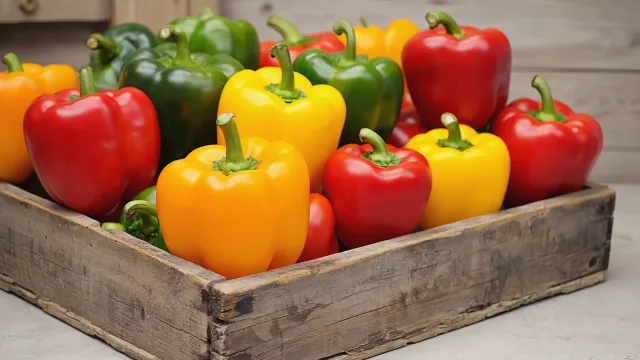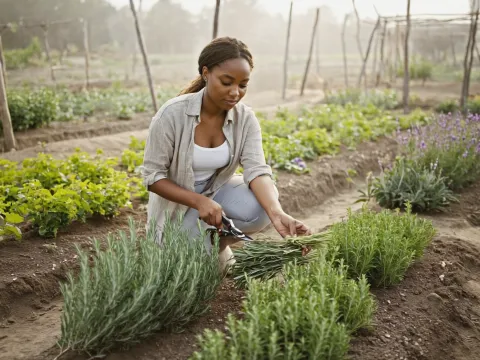Published on June 6, 2025
Last updated: June 6, 2025 · ⏱ 4 min read
Your Guide to Growing Cilantro Indoors Successfully

The Joy of Growing Cilantro Indoors
If you’re a fan of cooking with fresh cilantro, you know how essential this herb is for adding depth and flavor to a variety of dishes. Imagine being able to pluck fresh leaves right from your kitchen whenever a recipe calls for them. Growing cilantro indoors provides not only convenience but also the joy of nurturing a plant that enhances your culinary creations. This guide will walk you through the essentials of cultivating cilantro year-round, ensuring you have a fresh supply at your fingertips.
Choosing the Right Container
The first step in successfully growing cilantro indoors is selecting an appropriate container. Cilantro roots spread out, so a pot that is at least 6 to 8 inches deep is ideal. Look for containers with drainage holes to prevent water from pooling at the bottom, which can lead to root rot. You can choose traditional clay pots, plastic containers, or even recycled items like tin cans or jars, as long as they have proper drainage. Consider using a wide container if you plan to grow multiple cilantro plants together, as this allows them to thrive in close quarters.
Selecting the Right Soil Mix
Cilantro thrives in well-draining, nutrient-rich soil. An ideal soil mix might include potting soil blended with perlite or vermiculite for aeration. You can also add a bit of compost to provide essential nutrients. This mixture not only supports healthy root development but also helps retain moisture without becoming soggy. Make sure to fill your container with the soil mix, leaving about an inch of space from the top to prevent soil from spilling over when watering.
Lighting Requirements for Cilantro
Cilantro loves bright, indirect sunlight. Ideally, you should place your container near a south or west-facing window where it can receive at least 6 hours of light daily. If your indoor space does not provide sufficient natural light, consider using grow lights. Position the lights about 4 to 6 inches above the plants and keep them on for 12 to 16 hours a day to mimic sunlight. Adjust the height as the cilantro grows to ensure they receive adequate light without burning the leaves.
Watering Your Cilantro
Proper watering is crucial for healthy cilantro growth. Cilantro prefers consistently moist soil, but it's essential not to overwater. Check the top inch of the soil; if it feels dry, it’s time to water. When you do water, do so thoroughly until it drains from the bottom of the pot. Ensure that the pot has good drainage to prevent the roots from sitting in water, which can lead to mold and root rot. During warmer months, you may need to water more frequently, while in cooler months, the plant may require less moisture.
Fertilizing Cilantro for Optimal Growth
To encourage robust growth and lush foliage, consider fertilizing your cilantro periodically. A balanced, water-soluble fertilizer diluted to half strength is suitable. You can fertilize every four to six weeks during the growing season. Be cautious not to over-fertilize, as this can lead to excessive leaf growth at the expense of flavor. Organic options, like fish emulsion or compost tea, can also be effective and beneficial for your cilantro plants.
Pest Management for Indoor Cilantro
While growing cilantro indoors can help avoid many outdoor pests, it’s still essential to keep an eye out for common indoor plant pests like aphids, spider mites, and whiteflies. Regularly inspect your plants for signs of infestation, such as discolored leaves or webbing. If you spot any pests, you can gently wash them off with a stream of water or use insecticidal soap. Maintaining good air circulation around your plants can also help prevent pest problems.
Harvesting Your Cilantro
One of the most rewarding parts of growing cilantro indoors is harvesting it. You can start harvesting once your cilantro plants reach about 6 inches in height. Use sharp scissors or garden shears to snip off the outer leaves and stems, allowing the inner leaves to continue growing. Always leave some leaves on the plant to ensure it remains healthy and can continue producing. Cilantro is best used fresh, but you can also preserve it by freezing the leaves or making cilantro pesto for later use.
Common Problems When Growing Cilantro Indoors
Growing cilantro indoors can come with its challenges. One common issue is bolting, where the plant flowers and goes to seed prematurely, often triggered by heat or stress. If this happens, the leaves may become bitter. To prevent bolting, maintain a consistent temperature, avoid overcrowding, and ensure your cilantro receives enough light. If your cilantro does bolt, you can still collect the seeds for future planting or enjoy the flowers, which attract beneficial insects.
Culinary Uses of Fresh Cilantro
Once you’ve grown your cilantro, the fun really begins in the kitchen. Cilantro is a versatile herb that complements a variety of cuisines. Use it fresh in salsa, salads, and guacamole for a burst of flavor. It also works well in soups, curries, and stir-fries. The leaves, stems, and even the seeds (known as coriander) can be used in cooking, making cilantro a valuable addition to your culinary repertoire.
Conclusion
Growing cilantro indoors is not only rewarding but also enhances your cooking experience. With the right container, soil, light, and care, you can enjoy fresh cilantro all year round. Embrace the joy of nurturing your plants and savor the flavors they bring to your dishes. Whether you're a seasoned gardener or just starting, cultivating cilantro at home is a simple way to bring life and flavor into your kitchen.

Written by Soufyan from GrowToGrub
Soufyan is a gardening educator and founder of GrowToGrub. Through simple guides, easy recipes, and practical life hacks, he helps everyday growers turn small spaces into sustainable, delicious, and chemical-free living.


